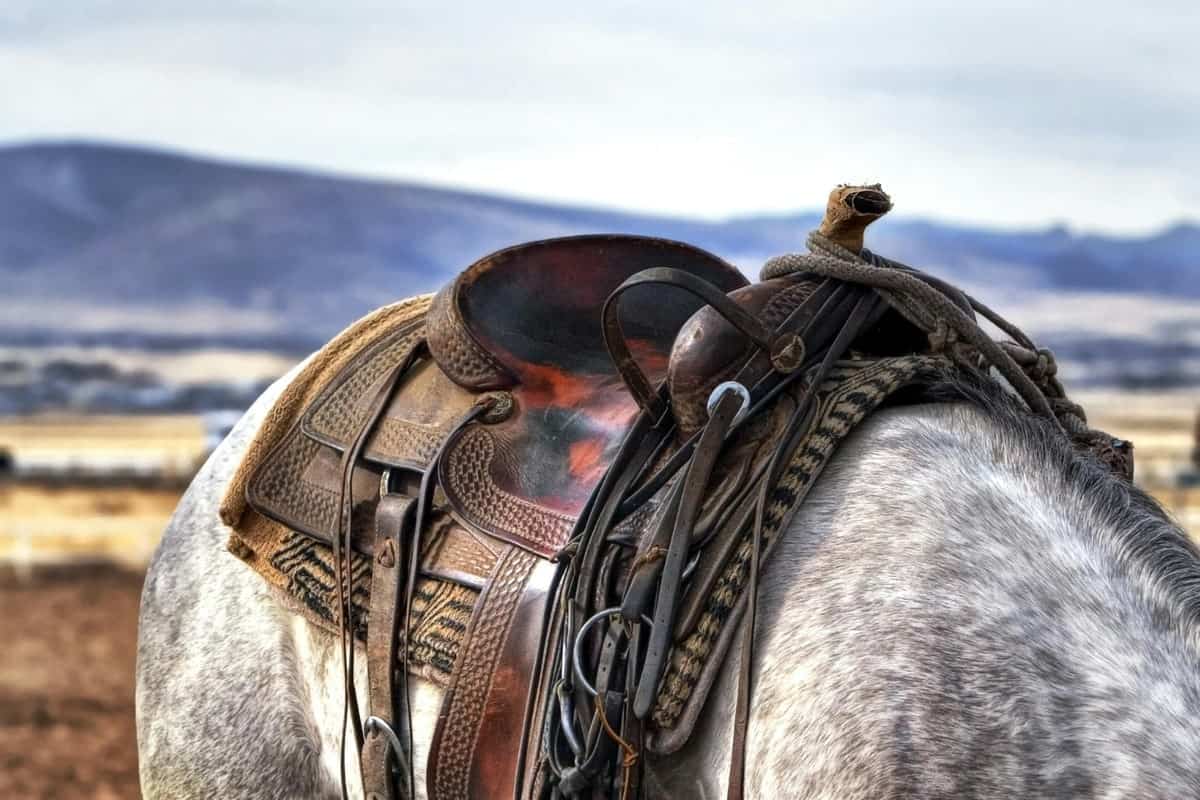The debate of English vs Western saddle has been going on for a long time. When humans first began to ride a horse, a saddle was designed just to help the rider sit still on the horse back. With the passage of time there were certain modifications made in the saddle according to the needs of different riders.
In recent decades, there were some alterations made in the saddles of horses to accommodate the requirements of horses for different types of riding tasks. With the changes in certain types of saddles, the saddle styles deviated into two main categories:
- English saddle
- Western saddle
Understanding English Saddles:
History and Origins
Like the English riding style, the design of the English saddle was also derived from the environment of Europe. The English saddles are traditional types of saddles. Its style was inspired by the was inspired by the European mounted military style.
- Tree: The foundation of the saddle, determining its shape and stability.
- Seat: Designed for close contact with the horse, promoting a more responsive ride.
- Flaps and Panels: Provide additional support and protection for the rider.
Design Features
The English saddle is often made with a laminated wooden tree which is then reinforced with either steel or a synthetic tree. The saddles are then covered with unadorned leather. Synthetic material may also be used to create the saddle which further decreases the weight of the saddle.
Size and design
English saddles are smaller and lighter, which designed to give rider a closer contact of the horse to the rider. The design of the English saddle is to keep the load on the horse as minimal as possible. It has no other features except those which are necessary for riding a horse and for the safety of the riders.
Riding Styles Suited for English Saddles
Primarily associated with disciplines like dressage, jumping, and eventing, English saddles offer riders a balanced and secure seat, ideal for intricate maneuvers and precise communication with the horse.
Exploring Western Saddles:
Historical Background
Its style was developed according to the needs of the cowboys working on the ranches. The cowboys used to chase the cattle and the style of the saddle was according to their needs.
Key Characteristics
- Saddle Horn: A distinctive feature for securing ropes and providing stability during cattle work.
- Cantle: Offers support and comfort, especially during extended rides.
- Stirrups: Larger and often covered with a tapadero for added foot protection.
Design Features
The construction of the western saddle starts with the ‘tree’ from which first the structure of different parts of the saddle are designed. The tree is mainly covered with rawhide or a modern synthetic coating like fiberglass. Synthetic materials are also sometimes used but synthetic materials are considered light and less expensive than the traditional materials.
Size and design
The western saddles are larger and heavier. They are designed to distribute the weight of the rider across all over the horse’s back. The design of the western saddle is to make the riding experience as smooth and as comfortable as possible.
Riding Styles Suited for Western Saddles
Although western riding is also a style used in different sports, the riding style was mainly introduced by the ranches of America. The main purpose of the western riding was to chase cattle. This was a job for the whole day for the ranchers. The saddle was designed to make the ride more comfortable so that the ranchers could easily go on a long trail chasing after the cattle for a long time without hurting the rider’s body.
English vs. Western saddle: A Comparative Analysis
- Comfort and Fit: The snug feel of an English saddle vs. the roomy comfort of a Western saddle.
- Riding Disciplines: Tailoring your choice to match the demands of your preferred equestrian activity.
- Aesthetics: The sleek elegance of English saddles vs. the rugged charm of Western designs.
Maintaining Your Saddle:
Cleaning and Care Tips The saddles must be kept with care. They must be cleaned regularly in order to preserve the leather of the saddle and to increase its life.
Regular Inspection The saddle must undergo proper quality check regularly and the signs of wear and tear must be looked for and addressed regularly in order to maintain both horse and riders comfort.
Addressing Wear and Tear Learn how to tackle common saddle problems, from loose stitching to worn-out billets, to extend the lifespan of your saddle.
Similarities
To most of the people, English saddle and western saddle look the same. But if you take a closer look at the saddle of the two kinds, you may find that the two saddles have many differences between them.
Here’s a list of similarities between English and Western horse riding saddles:
- Saddle Construction:
The saddle tree, a robust framework, is used to build both English and Western saddles. The saddle’s basic form and support come from the tree.
- Leather Material:
Both kinds of saddles are often made from premium leather. In addition to offering comfort and durability, leather has a timeless aesthetic appeal.
- Stirrups:
Stirrups are a feature of both English and Western saddles that support the rider’s feet. During riding, stirrups help with control, stability, and balance.
- Billets and Cinches:
To fasten the saddle to the horse, both varieties employ billets (straps on English saddles) or cinches (straps on Western saddles). These fasteners guarantee a secure fit and stop the saddle from slipping.
- Pommel and Cantle:
Both English and Western saddles have a pommel at the front and a cantle at the back, though the design and prominence may differ. These components contribute to the structure and balance of the saddle.
- Padding and Panels:
Both kind of saddles use panels or padding to improve rider comfort and equally distribute pressure across the horse’s back.
- Safety Features:
Both English and Western saddles are made with safety in mind, offering stability and a safe place for the rider to sit during a variety of riding activities.
- Attachment Points:
The connection points on both saddles allow riders to personalize their equipment for various uses, including saddlebags, breast collars, and martingales.
- Rigging Systems:
Both styles of saddles have a mechanism (Western: front and back cinch system, English: billet system) to properly secure the saddle to the horse and distribute the rider’s weight, even though the exact rigging may vary.
- Saddle Maintenance:
English or Western, frequent upkeep is necessary to guarantee the saddle’s life. Cleaning, conditioning, and recurring wear and tear examinations are beneficial for both varieties.
For riders who are switching between English and Western disciplines or who value the adaptability that both saddle styles provide in many equestrian pursuits, acknowledging these parallels can be beneficial.
Horn
The presence of horn is obviously one of the most important features present in the western saddle and absent in the English saddle. The horn in western saddle is used to hold the rope of the cowboy and the riders can also hold the horn for support when taking a sharp turn.
Conclusion
The question arises which type of saddle must you use for riding? The answer for this question is that it depends upon two factors:
1. Your preferences: The saddle type depends on the type of horse-riding style you are intending to pursue. An English saddle is used with English riding style while a western saddle is used for a western riding style.
2. The type of horse: The size and type of saddle is specific for a horse and the type of the horse. Some breeds of horses are good for English riding style while others are good for western riding style.



